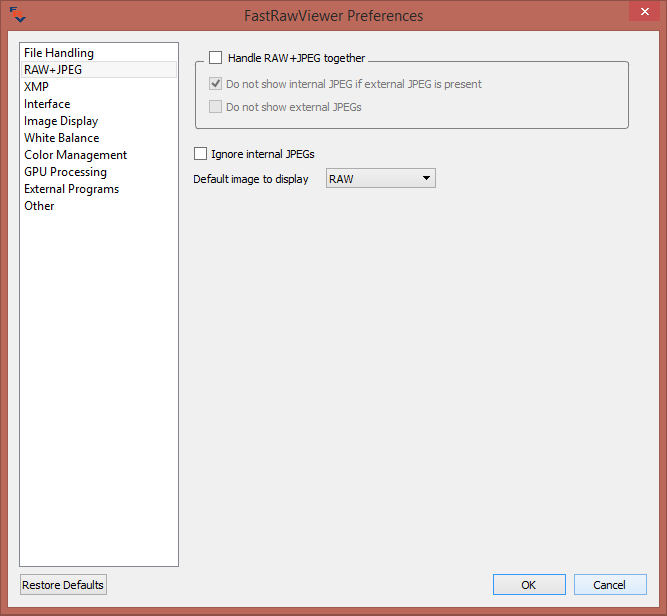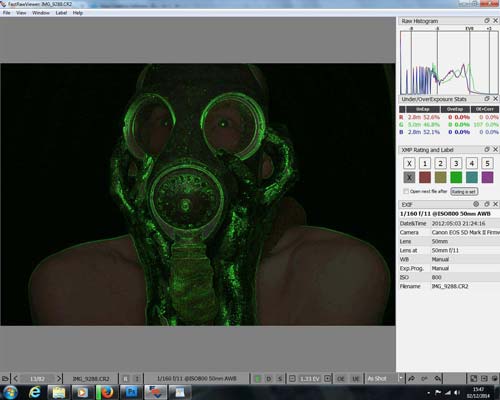

- #Fastrawviewer reviews install#
- #Fastrawviewer reviews software#
- #Fastrawviewer reviews series#
- #Fastrawviewer reviews free#
I've already made a few broad brush decisions like I'll stay with Canon gear but I did pick up an R6 and at least for the near future I'll use my EF lenses rather than buy the newer RF versions.
#Fastrawviewer reviews software#
There has been a bit of an evolution in cameras and editing software so I've decided to review all aspects. I use PM after FRV to add reams of metadata though.Having stepped away from photography for pretty much the last 18 months I'm now recharged and getting reengaged. And I use PM as well I just find this better and quicker for reviewing. I thought it was well worth buying just the the training videos and for having a fast browser for images. And in any case, I'd still have to cull and I just find it far easier on a bigger screen. But I often don't have time, and the screen is washed out in light, and so on. And it's super fast.Īnd yes, I guess I could make more use of the histogram in the camera, etc.

Saves me time, as I don't have to import as many into Lr. I use FRV for culling not only among brackets, but overall. Could I have done as well with carefully using my in-camera (jpeg) histogram and zebra display? Certainly that's the way many of the raw-shooters do it. Results have been good, but I sometimes wonder if its worth the extra effort. I've been using FRV for a while, bracketing my images and choosing the exposure with minimun per channel clipping and greatest dynamic range. It could be a valuable tool to professionals. If you don't have a lot of raw to process, it's probably not worth the money. It allows me to go through material from several years back. I don't use it for cataloging, final processing, etc.
#Fastrawviewer reviews free#
Currently, FRV is developing a dual pixel program - it's a beta free download. I can scan through RAW,JPG, JPF or anything else and dump those that don't make the cut in short order.įRV provides for single or batch handling, contrast adjustment, exposure adjustment, rotation, flips, sharpening, etc and links to external programs, e.g. For that, nothing really equals Fast Raw Viewer. And there are scads of RAW I need to go through. I'm a prolific shooter and have years of backlog that haven't been gone through properly, i.e. Topaz plugins and Topaz studio, serve fine either independently or through CS6 with recent RAW. I continue to use CS6 not just for itself, but as a front-end for a growing number of filter packages. My primary systems are Canon 5D Mk4, an 80D and a pair of Sony mirrorless, a NEX 7 and an A7R. The cameras I've accumulated in the last few years generate RAW that CS6 won't handle with the exception of the Leica DNG files.I could convert, but am not really inclined to do that. I've continued to use Photoshop and Lightroom in the last downloaded version and whatever updates come.
#Fastrawviewer reviews install#
My most recent is CS6, the last to install by download or disk. Photoshop has been a lead element for a couple of decades. I've used it for several years and find it very useful, primarily as a pre-editor. I'm now a paying customer at $20 (full regular price), it's a steal. I don't think FRV is a huge advantage there compared to a JPEG-based viewer (ie, one which just displays the embedded JPEG versions and histograms etc), but I also periodically do more landscape/architecture shots which will really benefit from the raw histogram feature. I just went through a softball tournament shoot, where I'm not looking at bracketed exposures but rather looking for proper focus, capturing the action, faces, etc. You might also be interested in "What is FastRawViewer? Part 2" which gives a good example of why using the Raw histogram is critical to culling rather than the JPEG or in-camera histograms. The culling workflow one is at the bottom. The videos are on YouTube, linked from their site at. One of them is a culling workflow video which really goes into detail of determining which bracketed shot is "best", specifically exposing to the right on all three raw channels (or rather, the right-most RAW channel) to avoid clipping of important (as opposed to specular) highlights, and providing the most low-end room in the shadows to minimize noise. I was also just looking into FastRawViewer for myself, and happened across some well-thought-out videos on their site. Then look at these candidates and pick the image with the widest exposure range that does not clip the shadows (In my case for Pany Lumix FZ-1000 the dynamic range is about 10 EV).
#Fastrawviewer reviews series#
Digger also looks very good but might be too much of a technical distraction.Īny advice on how best to use FRV to select the "best" from a series of bracketed exposures? From advice in FRV vids and tuts I guess I look for an exposure with not more than 0,3 EV per channel (is this the correct value?) of over-exposure in important areas.


 0 kommentar(er)
0 kommentar(er)
